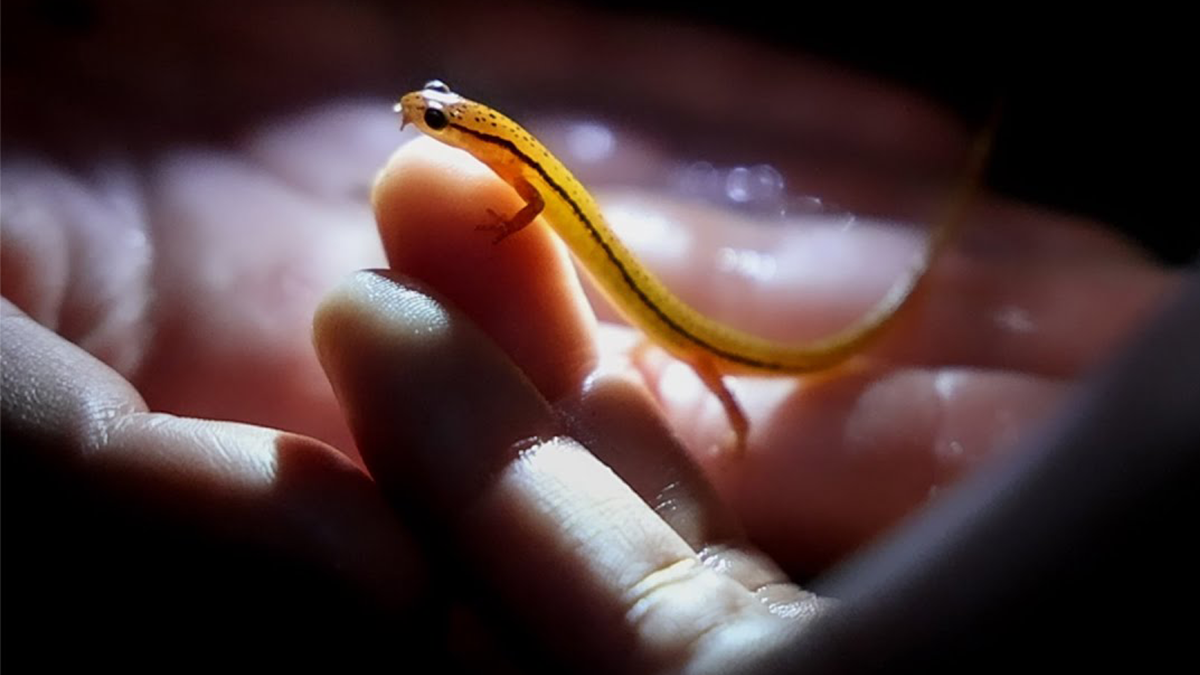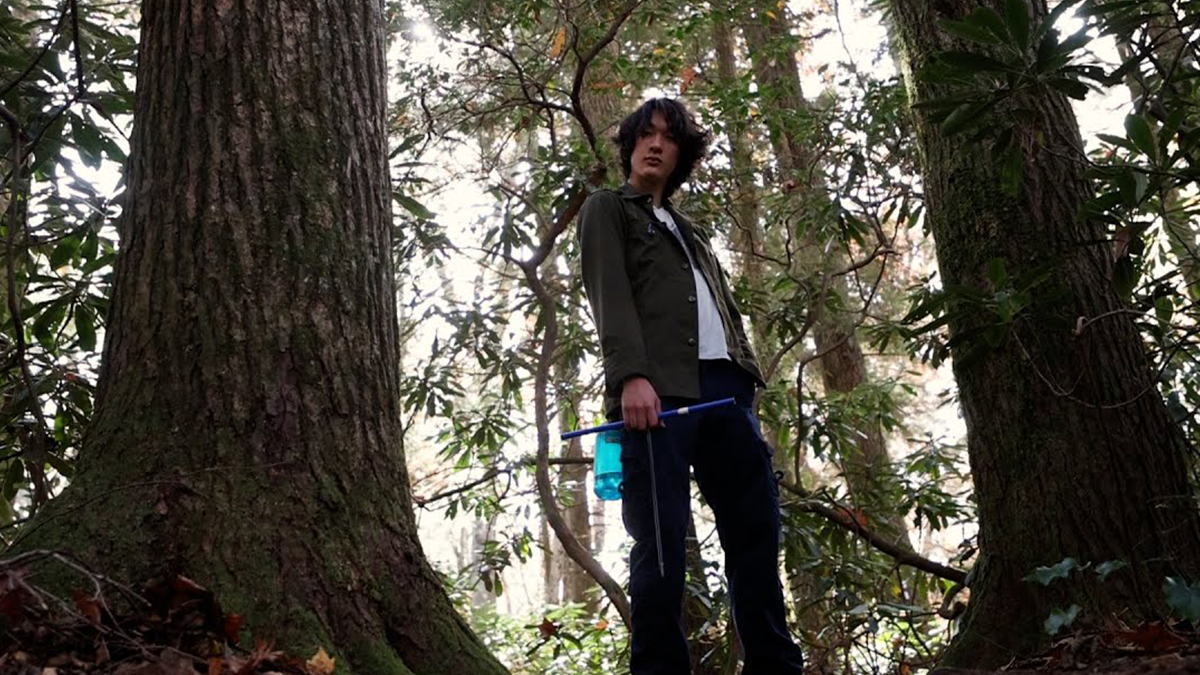Seeking Salamanders
Published on March 7, 2023Carolina students discover their passion and aptitude for fieldwork

Carolina students discover their passion and aptitude for fieldwork
Kristina Hefferle ‘24 and Leah Morrissey ’25 spent the fall 2022 semester looking for elusive male Blue Ridge two-lined salamanders ― bright orange 6-to10-centimeter-long amphibians about the thickness of a pencil, known to hang out around the streams and lakes of the southern Appalachian Mountains.
Stumbling through mountainous terrain in the dark for hours on end, turning over rocks and leaves in muddy creek beds, and looking for an animal the size and color of a baby carrot makes having a reliable research partner crucial.
“I cannot, for the life of me, spot a salamander — but Leah can. And she might miss it when she tries to catch it, but I’m there to back her up if she needs it,” said Hefferle.
It’s the kind of teamwork that develops after a semester of close collaboration at the UNC Institute for the Environment’s Highlands Field Site — a program for a small cohort of UNC-Chapel Hill undergraduates to live and conduct research at the Highlands Biological Station in western North Carolina.
That semester, the duo gathered data on 105 salamanders, three times the number of last year’s survey. Both credit their success to their partnership.
The data compares the genetic makeup of males, their reproductive behavior and how they may change over a lifetime.
Getting out on the trail, looking for salamanders, just really sparked that childlike curiosity about nature,” Morrissey said. “This program has convinced me to switch my major to science in the hopes of more fieldwork either during school or in a future career.”





